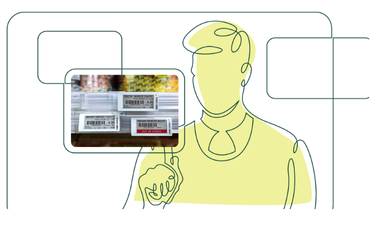This is the second installment of FMI's Technology Blog Series, which explores digital innovations for the food industry and shares compelling insights from our research.
By: Doug Baker, Vice President, Industry Relations, FMI

The food supply chain, stretching from farm to table, is a vital artery of modern life and is increasingly integrated with digital technology at every step. Technology streamlines operations and enhances efficiency from smart farming equipment that monitors crop health to sophisticated logistics platforms that ensure timely delivery. However, as our reliance on these technologies grows, so does our vulnerability to cyber threats that can disrupt this delicate system. Recognizing, fortifying against and mitigating the impact of potential attacks targeting these vulnerabilities is a crucial concept known as cyber resilience.
Key Vulnerability Points Along the Food Supply Chain
Every link in the food supply chain has digital vulnerabilities, underscoring the need for comprehensive cybersecurity strategies. Each point represents a potential entry for cyber threats.
- In farming and production, smart equipment and data analytics play a pivotal role in maximizing yields and managing resources but also introduce risks of unauthorized access and data manipulation.
- During processing and packaging, digital systems are essential for tracking the journey of food items, ensuring they are safe and correctly labeled. A breach from bad actors could lead to mislabeled products or contamination risks.
- The distribution and logistics phase relies heavily on software and networks to manage the flow of goods. A cyberattack on these systems can cripple the supply chain, leading to delays or loss of goods.
- Finally, at the retail and consumption end, point-of-sale systems and databases holding consumer data are attractive targets for cybercriminals, threatening not just operational continuity but also customer privacy.
Strategies for Building Cyber Resilience in the Food Industry
Building cyber resilience in the food supply chain requires a multifaceted approach, combining best practices for individual stakeholders, collaborative efforts for industry-wide security and the strategic use of technology. For individual stakeholders, including farmers, processors, and retailers, this begins with foundational practices such as regular updates and patch management for software systems, coupled with comprehensive employee training on cybersecurity awareness and phishing prevention. Additionally, standardized redundancy, backups and emergency recovery processes and infrastructure are critical for mitigating the worst impacts of cyberattacks. These steps are crucial in creating the first line of defense against cyber intrusions.
Collaborative efforts are essential at an industry-wide level. This includes sharing information on threats and vulnerabilities through platforms like Information Sharing and Analysis Centers (ISACs), industry-specific organizations that share information on cyber threats and facilitate the sharing of data and intelligence between companies.
Additionally, implementing standardized cybersecurity protocols across the supply chain can help unify companies against common threats. Leveraging advanced technology can also play a pivotal role in enhancing security. For instance, blockchain technology can offer unparalleled traceability and transparency, while artificial intelligence and machine learning can be used for sophisticated threat detection and response mechanisms.
In the modern age, the resilience of the food supply chain against cyber threats is not just a matter of technological safeguarding, but a foundational component of global food security.


 Industry Topics address your specific area of expertise with resources, reports, events and more.
Industry Topics address your specific area of expertise with resources, reports, events and more.
 Our Research covers consumer behavior and retail operation benchmarks so you can make informed business decisions.
Our Research covers consumer behavior and retail operation benchmarks so you can make informed business decisions.
 Events and Education including online and in-person help you advance your food retail career.
Events and Education including online and in-person help you advance your food retail career.
 Food Safety training, resources and guidance that help you create a company food safety culture.
Food Safety training, resources and guidance that help you create a company food safety culture.
 Government Affairs work — federal and state — on the latest food industry policy, regulatory and legislative issues.
Government Affairs work — federal and state — on the latest food industry policy, regulatory and legislative issues.
 Get Involved. From industry awards to newsletters and committees, these resources help you take advantage of your membership.
Get Involved. From industry awards to newsletters and committees, these resources help you take advantage of your membership.
 Best practices, guidance documents, infographics, signage and more for the food industry on the COVID-19 pandemic.
Best practices, guidance documents, infographics, signage and more for the food industry on the COVID-19 pandemic.
